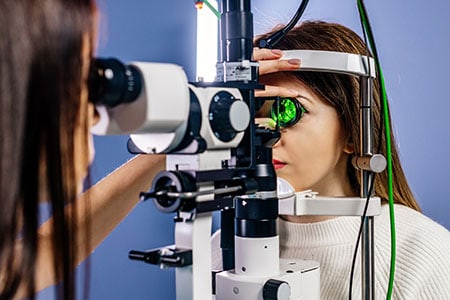All Categories
Featured
Table of Contents

Routine eye exams are important for keeping excellent vision and discovering possible eye wellness problems early. However, the frequency of these tests can vary dramatically based upon an individual's age, way of living, and overall health and wellness. Recognizing the advised routine for eye examinations can aid make sure that people of every ages receive ideal treatment and surveillance for their eye health and wellness.
Newborns and Toddlers (0-2 Years)
For infants and kids, eye tests are essential for spotting any type of potential vision troubles early. The American Academy of Ophthalmology recommends that a kid's very first eye exam should happen at around six months old. Throughout this initial see, the eye care specialist will examine the youngster's visual development and check for any noticeable eye problems.Following this initial examination, it is recommended that kids have one more eye examination at age three. This browse through will certainly concentrate on examining the youngster's general visual feature, consisting of eye positioning and the capability to track items. If no issues are discovered, the following exam should be set up prior to the kid starts institution, commonly around age 5 or 6.
School-Aged Children (6-18 Years)
Once children reach college age, normal eye tests need to be scheduled every one to two years. Vision is important for finding out and growth, and lots of colleges carry out vision testings. These testings do not change a detailed eye exam by an eye care specialist.For kids associated with tasks or sporting activities calling for substantial aesthetic emphasis, yearly eye exams might be suggested. In addition, if a youngster shows signs of vision problems-- such as problem checking out, squinting, or frequent migraines-- a check out to the eye doctor should be arranged asap.
Young Adults (19-39 Years)
Youthful grownups commonly have fewer vision changes than older age, however regular eye exams continue to be vital. The general recommendation is to arrange an eye test every two years throughout this period. Individuals with particular risk elements-- such as a family background of eye disease, diabetic issues, or those that wear contact lenses-- should take into consideration yearly eye examinations.In addition, those that spend substantial time on electronic gadgets might experience electronic eye stress. If signs such as dry skin, fatigue, or obscured vision take place, it may be smart to see an eye treatment specialist quicker.
Grownups (40-64 Years)
Adults aged 40 to 64 need to set up eye exams every one to 2 years. Eye examinations can likewise help detect other common age-related problems such as glaucoma, cataracts, and macular degeneration.If individuals in this age have threat variables like hypertension or diabetes, they might need even more regular evaluations to monitor their eye health and wellness closely.
Elders (65 Years and Older)
For elders, regular eye tests become much more important. The American Optometric Association suggests that people matured 65 and older have an eye exam at least yearly. Older grownups go to a higher risk for different eye diseases, consisting of cataracts, glaucoma, and age-related macular degeneration. Early detection and treatment of these problems can prevent vision loss and boost the high quality of life.Verdict.
Understanding the appropriate routine for eye exams based upon age is essential for preserving ideal eye health and wellness throughout life. From babies to senior citizens, routine eye assessments play an essential function in detecting problems early and making certain that vision remains sharp. By adhering to these standards and seeking advice from an eye treatment expert, people can take proactive steps toward maintaining their vision and overall wellness. Whether it's a kid's first check out or an elderly's yearly exam, prioritizing eye care is an investment in long-lasting well-being.Table of Contents
Latest Posts
Selecting the Right Location: What to Take into consideration for Weddings, Seminars, and Events
Published en
1 min read
Experience the Boogaloo: Dining, Drinks, & Sports at FunCity Hotel
Published en
2 min read
The Boogaloo Sports Bar & Grill at FunCity Resort Hotel: Where Fun Meets Taste
Published en
1 min read
More
Latest Posts
Selecting the Right Location: What to Take into consideration for Weddings, Seminars, and Events
Published Mar 21, 25
1 min read
Experience the Boogaloo: Dining, Drinks, & Sports at FunCity Hotel
Published Feb 04, 25
2 min read
The Boogaloo Sports Bar & Grill at FunCity Resort Hotel: Where Fun Meets Taste
Published Feb 01, 25
1 min read